Name an incredible but severely underrated TV show. Need a clue? Look no further, friends. My Japanese butter cookies are delectable biscuit shards glued together using the Japanese art of kintsugi and are decorated in honour of Netflix’s Blue Eye Samurai. Get the heat going. We have some forging to do.
Contents
The Bake
This was an easy one to design. A promotional image for Blue Eye Samurai involves various shots from the series all pieced together by liquid gold. Mizu’s blue eyes are ablaze as the main feature of this image. This was what inspired this bake.
It felt so entirely appropriate. Mizu spends the series seeking revenge as a way of becoming whole again.
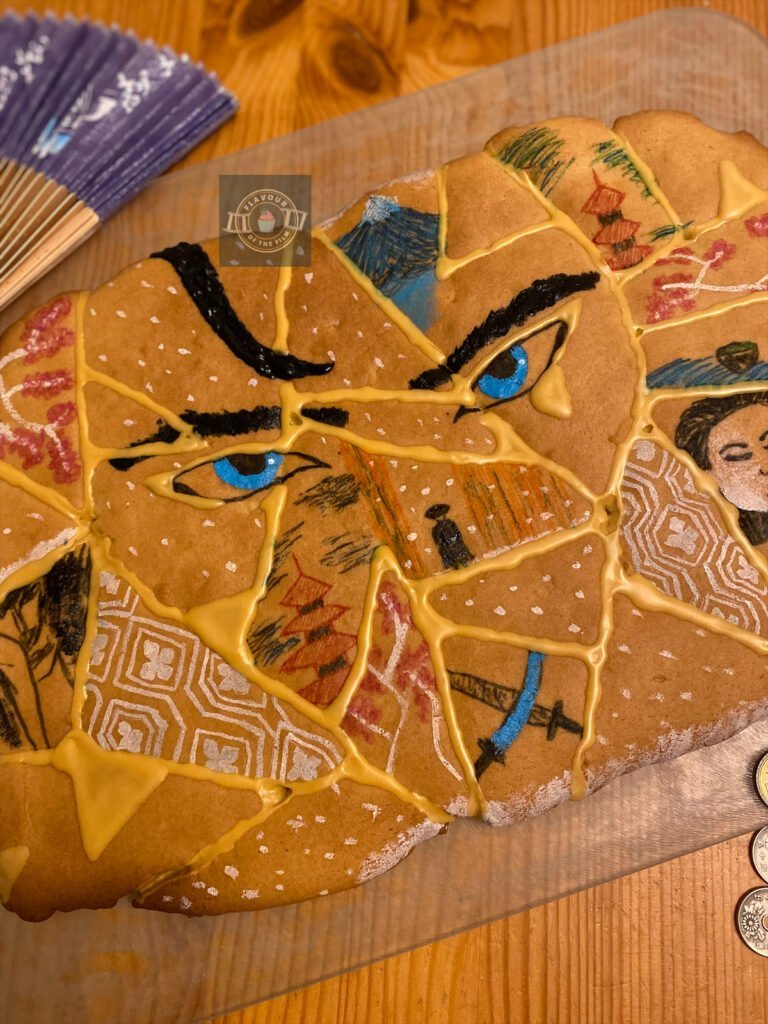

This is where the art of kintsugi comes into play. For those who aren’t aware; kintsugi is the Japanese art of repairing something (historically broken pottery) with a precious lacquer rather than throwing it away. The lacquer is usually blended with powdered gold, silver or platinum.
The philosophy behind this technique is to show that the act of mending a broken piece is not something to cover up or make invisible. That the mending is part of the object’s history and that it should be highlighted and celebrated. The object only becomes stronger as a result.
A beautiful philosophy that can be applied to many elements of life.
I bought my brother a kintsugi kit years ago and borrowed it when a Christmas decoration I had bought was dropped and broken. I had bought the decoration in honour of my grandmother so it was important to me to repair it. The kintsugi really adds beauty to it.

The base of this bake is a recipe for Japanese butter cookies.
Delicious, light and buttery biscuits that are incredibly popular in Japan. I looked to Just One Cookbook for inspiration and authenticity for this one. Specifically their butter cookie recipe for biscuits also known as Hato Sabure (鳩サブレー).
These specific biscuits originate from Yokohama and since I have incredibly special memories of my time in this wonderful part of Japan, it felt only right to reference this recipe.

The Japanese butter cookies recipe is very simple and only requires five ingredients.
It is actually very similar to my Good Omens sugar cookies which are also very easy to whip up!
The key is to make sure to chill the dough before and after shaping so that the biscuits don’t lose too much of their shape. They will spread and rise a little in the oven due to the quantity of butter in the dough, as well as the baking powder.
This is why I recommend positioning the shards of dough slightly apart from one another so that they join together during baking whilst still leaving significant cracks for the kintsugi icing.
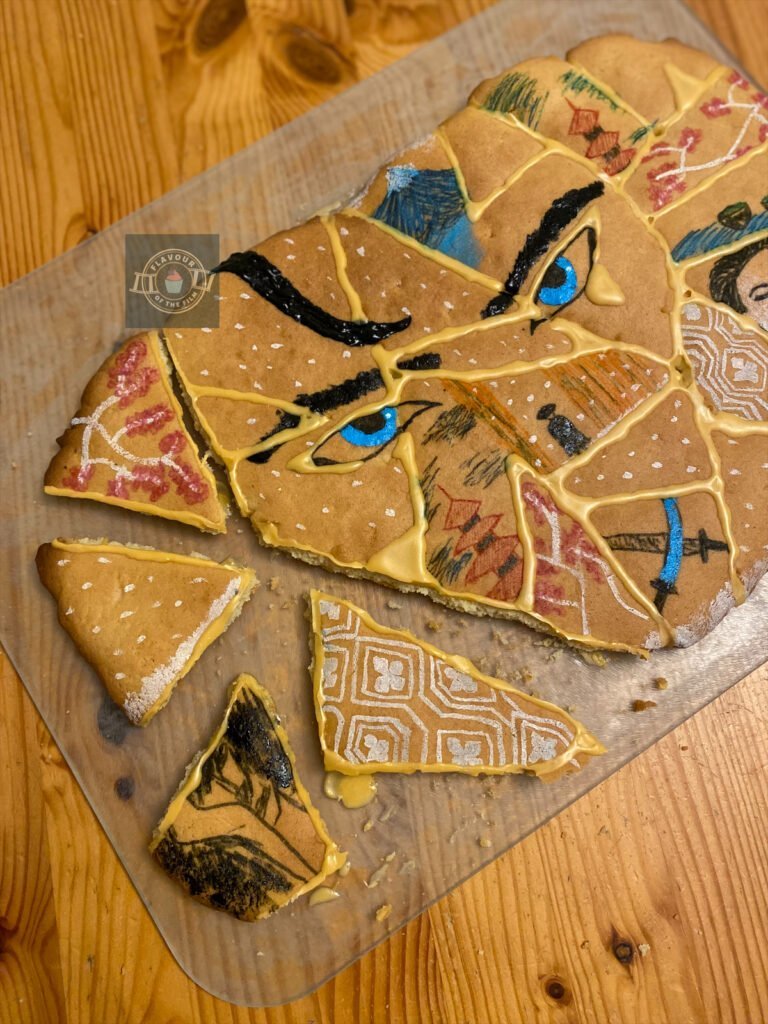
Although Japanese style butter cookies are traditionally not decorated, this is Flavour of the Film.
Decoration plays a huge part in the actual representation of the film or TV show that I am celebrating. Nevertheless, I went for a more minimalistic technique so that it didn’t undermine the actual biscuit.
For the kintsugi element of my Japanese style butter cookies, I created a royal icing and mixed in my powdered edible gold glitter. I piped this in the cracks of the biscuit to mimic the art. This is the only icing/added sweetness and it doesn’t cover the entire bake.
The imagery was achieved with a mix of painting with food colouring mixed with a splash of vodka for the water colour effect – an homage to the exquisite visuals of Blue Eye Samurai – and also the use of edible ink pens. Using both allowed for different textures and intensity of colours, particularly for Mizu’s eyes.
Top Tips
- Avoid over working the biscuit dough so that you don’t shift the texture away from being light and crispy. An over worked biscuit dough can result in a tough biscuit.
- Make sure not to skip the chilling stages. Chilling the dough as much as required prevents the biscuits from spreading too much and losing their shape during the baking process.
- The royal icing is thin when you pipe it, so try to keep the open end of your piping bag/sandwich bag held towards the sky. You may end up with icing pouring out in unwanted places, otherwise. Alternatively, if the bag is big enough, tie the open end, leaving the tip as the only open section.
- Get really creative with the decoration. It’s so therapeutic. So good for the soul. You don’t have to be an artist to enjoy this part!
- Edible pens can be found in most local supermarkets and on many shops online. They’re a great tool to have in your culinary cupboard, particularly if you’re a fan of this sort of bake decorating.
The great thing about these Japanese inspired butter cookies is that despite being connected, they can be broken off and enjoyed individually thanks to the cracks! They are so easy and so fun to make. I hope you have a brilliant time making them and really revel in the kintsugi element. Enjoy!
Happy baking, happy eating!
The Recipe
Ingredients
Japanese butter cookies:
- 115g [4 oz] unsalted butter softened
- 100g [½ cup] caster sugar
- 1 large egg
- 200g [1¼ cup] plain [all-purpose] flour
- 1 level tsp baking powder
Decoration:
- 75g [½ cup] royal icing or icing [confectioners] sugar
- 1 tbsp water
- 1-2 tsp edible gold glitter or gold food colouring
- Light blue food colouring/paint
- Black food colouring/paint
- White food colouring/paint
- Other food colourings/paints and edible ink pens in colours of your choice
- Small splash of vodka with each colour optional
Serves: 10 +
Preparation time: 10 minutes
Chilling time: 1 hour 10 minutes
Baking time: 15 minutes
Decorating time: 1 hour +
Method
Japanese butter cookies:
- In a large mixing bowl, cream together the butter and sugar until very pale and fluffy.
- Add the egg and beat in well for a couple of minutes on a medium speed so that the mix is very light.
- Sieve the flour over the mix and add the baking powder. Beat in until a dough has formed. If the dough seems very soft, sieve in a little more flour and beat in until the dough is stiffer but still soft.
- Scoop the dough into a ball and wrap in cling film/plastic wrap/beeswax paper and chill in the fridge for at least 1 hour or around 20 minutes in the freezer.
- After enough time has passed, retrieve your dough from the fridge and gently roll out into a rough (but even in thickness) rectangle shape straight onto a sheet of baking parchment/greaseproof paper.
- Slide the dough on the paper onto the baking tray and adjust if necessary.
- Using a very sharp knife, score the cracks into the dough. Start with Mizu’s face shape and then add more cracks where desired.
- Gently lift the biscuits up and away from each other, creating a slight gap in between each one. The original shape of the entire dough should still be clear – like a puzzle with pieces that have been put out in the correct places but not yet joined together.
- Once chilling time is nearly up, preheat your oven to 190°C [375°F] or 180°C fan. Get a baking tray ready.
- Put the dough on the tray back in the fridge to chill for 10 more minutes.
- Once chilled, bake for around 12-15 minutes, until golden in colour.
- Once baked, leave your biscuits to cool completely on the tray.
Decoration:
- While your Japanese butter cookies are cooling, begin preparing your kintsugi icing.
- Mix together the icing sugar and water in a bowl until a thick paste has formed.
- Add the gold edible glitter or gold food colouring and mix in.
- Pour the icing into a piping bag or sandwich bag with a very small amount of the end cut off. Tie the open end of the bag, leaving just the tip open so that none of the icing spills out. Set aside.
- Depending on how connected your biscuits are, carefully lift the biscuit slab from the paper or gently peel the paper off from underneath the entire bake. Make sure to place your biscuits straight onto your chosen board/presentation dish now.
- Using your chosen food colouring mixed with a very small splash of vodka (if using), a couple of thin paint brushes and/or your edible ink pens, paint and draw the details and scenes that you have chosen. If using liquid food colouring, you will likely not need to use vodka and can just paint straight onto the biscuits.
- Start with Mizu’s eyes, eyebrows and hair curl. Fill in the other segments with varying scenes and patterns from Blue Eye Samurai. This could also be simple symbols or even more broad imagery related to Japan like Mount Fuji and cherry blossom trees.
- Feel free to add elements like snow and trees which feature heavily in the show.
- Finally, pipe your kintsugi icing into the cracks of your biscuits. Press them together if they are not all solidly connected to one another, using the icing as a ‘glue’.
- Leave to set before serving. Note: the royal icing won’t set completely hard so you can still pull the biscuit shards apart from one another.
These deliciously light and buttery Japanese butter cookies can be enjoyed for up to 1 week after baking if kept in an airtight container/cake box. As with lots of biscuits, these cookies may soften over time, but they will still remain delicious. Enjoy!
The TV Show
I’d say it took around seven seconds of watching the promotional clip for this show. Seven seconds for me to decide that Blue Eye Samurai was worth a watch. I put the first episode on straight after those seven seconds were up.
What a watch. I can’t believe more people aren’t talking about this! There is so much to like about Blue Eye Samurai. While it’s certainly not one to watch with the family, this show is magnificent.
A must-watch, in my opinion. If animated shows are your thing, of course.
The story is gripping. The characters are well developed. But, what really sets Blue Eye Samurai apart are the VISUALS. I mean, seriously. Every element of the visuals in this show are second to none.

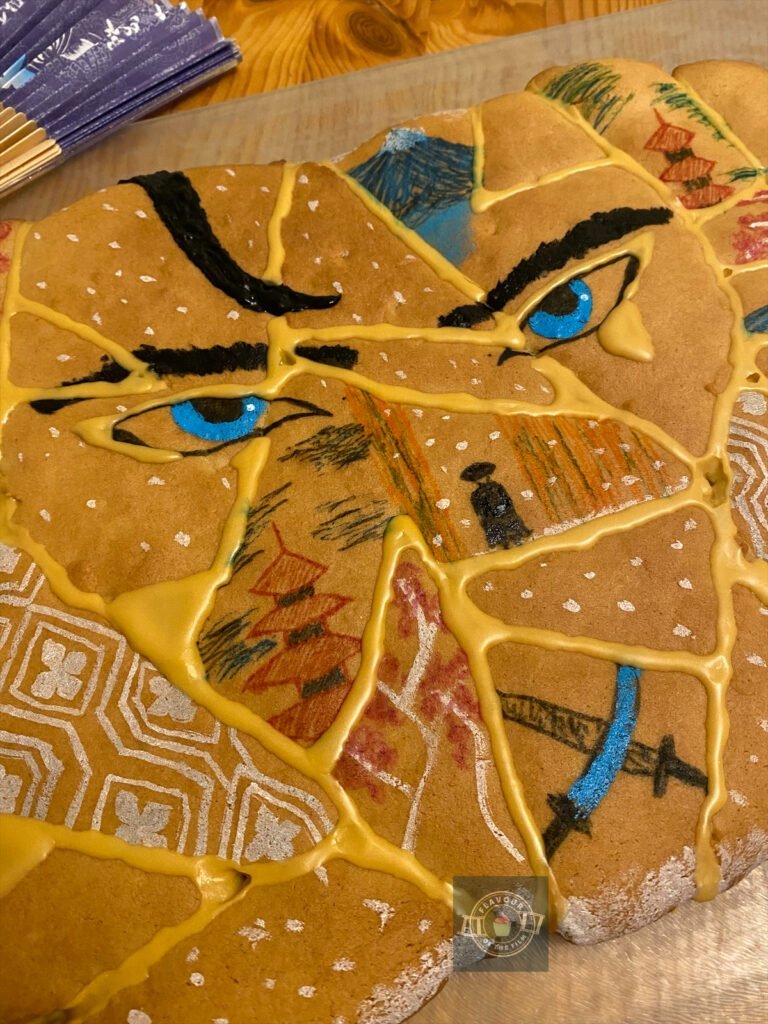
Blue Eye Samurai is pure art work.
Every shot is like a divine painting. Thanks to the artists, it is very difficult to tear your eyes away from the screen. You just can’t risk missing anything visually stunning – especially during the fight scenes.
At the end of 2023, creators Amber Noizumi and Michael Green graced our Netflix selection with Blue Eye Samurai. The story of a young warrior, but the name of Mizu, set on the path of revenge after having suffered through a childhood being treated as an outcast.
Not just any revenge, though. This revenge is driven by the young warrior’s own blood.
Set in Edo-period Japan, Blue Eye Samurai gives us a story set during the time when Japan was closed off to the rest of the world. Except in this tale, there were four white men residing illegally in the country, trading in all manner of morally wrong and outright dangerous businesses.
One of those white men unknowingly fathered Mizu. That childhood of suffering? All down to the warrior’s mixed blood and blue eyes inherited from said white man.
Hardcore stuff, I know.
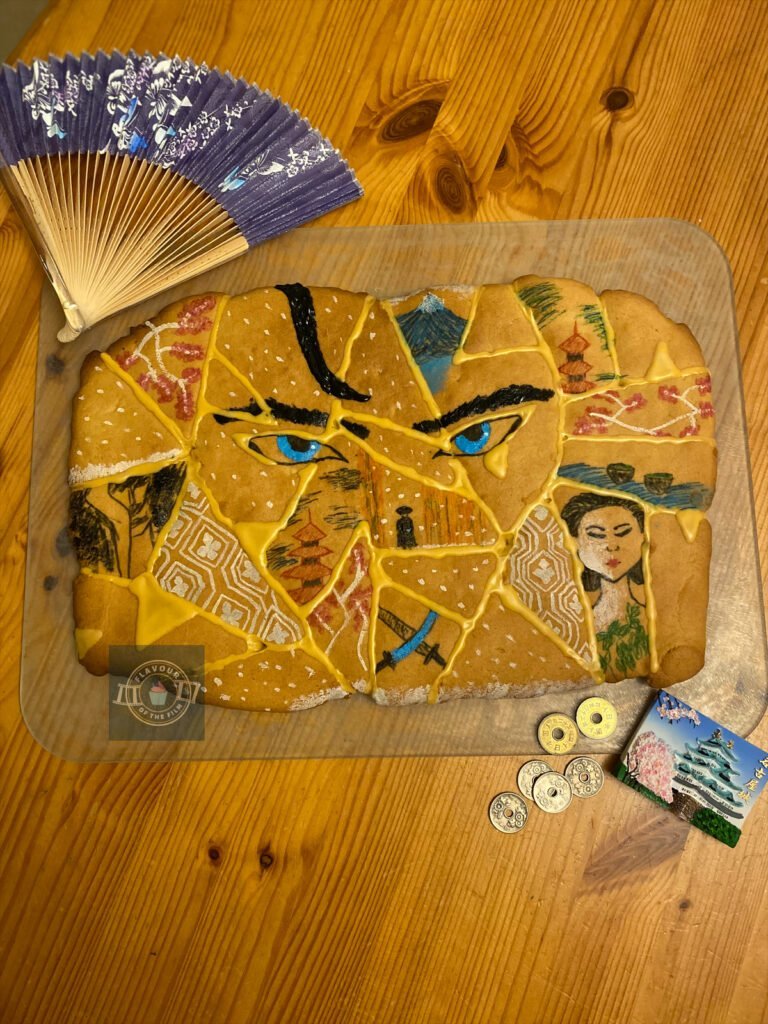
Yet, this tale of revenge has so much more substance to it.
It’s violent, yes. But it is driven by connections, human relationships, the determination of self worth, and destiny.
I want to give proper recognition to the entire art department in particular here. There are so many names that I won’t list them all. Over twenty-five people make up a collective of character designers; visual development artists, storyboard artists and production designers. That doesn’t even include costume or art direction!


I’m always an advocate for the writers because the written story is the backbone of any project.
Blue Eye Samurai’s creators were the core writers, with Yana Bille writing one episode as well.
But, the visual artists and editing team – Yuka Shirasuna and Brad Lee Zimmerman pieced this artwork together – fully deserve to be highlighted for Blue Eye Samurai. It really is exceptional work.
Voicing the characters in this story include a whole range of talent: Maya Erskine, Masi Oka, George Takei, Brenda Song (who else loved The Suite Life of Zack and Cody growing up?), Kenneth Branagh, Darren Barnet, Randall Park, Cary-Hiroyuki Tagawa, Ming-Na Wen and more.
The story boasts a vast expanse of characters; some more minor than others but all with great purpose.
Stephanie Hsu (any Everything Everywhere All at Once fans here?), Harry Shum Jr. and Tamlyn Tomita (a Teen Wolf Mama!) also lent their voices.
I’m currently rewatching Blue Eye Samurai with my brother, who is watching it for the first time and loving it. It really is a treat.
Recipe Card
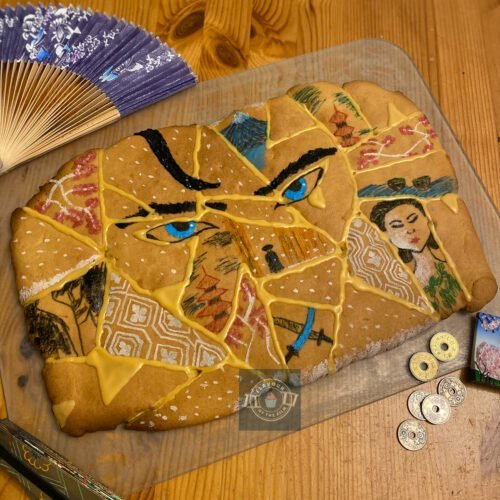
Japanese Butter Cookies | Blue Eye Samurai
Ingredients
Japanese butter cookies:
- 115 g [4 oz] unsalted butter softened
- 100 g [½ cup] caster sugar
- 1 large egg
- 200 g [1¼ cup] plain [all-purpose] flour
- 1 level tsp baking powder
Decoration:
- 75 g [½ cup] royal icing or icing [confectioners] sugar
- 1 tbsp water
- 1-2 tsp edible gold glitter or gold food colouring
- Light blue food colouring/paint
- Black food colouring/paint
- White food colouring/paint
- Other food colourings/paints and edible ink pens in colours of your choice
- Small splash of vodka with each colour optional
Instructions
Japanese butter cookies:
- In a large mixing bowl, cream together the butter and sugar until very pale and fluffy.
- Add the egg and beat in well for a couple of minutes on a medium speed so that the mix is very light.
- Sieve the flour over the mix and add the baking powder. Beat in until a dough has formed. If the dough seems very soft, sieve in a little more flour and beat in until the dough is stiffer but still soft.
- Scoop the dough into a ball and wrap in cling film/plastic wrap/beeswax paper and chill in the fridge for at least 1 hour or around 20 minutes in the freezer.
- After enough time has passed, retrieve your dough from the fridge and gently roll out into a rough (but even in thickness) rectangle shape straight onto a sheet of baking parchment/greaseproof paper.
- Slide the dough on the paper onto the baking tray and adjust if necessary.
- Using a very sharp knife, score the cracks into the dough. Start with Mizu’s face shape and then add more cracks where desired.
- Gently lift the biscuits up and away from each other, creating a slight gap in between each one. The original shape of the entire dough should still be clear – like a puzzle with pieces that have been put out in the correct places but not yet joined together.
- Once chilling time is nearly up, preheat your oven to 190°C [375°F] or 180°C fan. Get a baking tray ready.
- Put the dough on the tray back in the fridge to chill for 10 more minutes.
- Once chilled, bake for around 12-15 minutes, until golden in colour.
- Once baked, leave your biscuits to cool completely on the tray.
Decoration:
- While your Japanese butter cookies are cooling, begin preparing your kintsugi icing.
- Mix together the icing sugar and water in a bowl until a thick paste has formed.
- Add the gold edible glitter or gold food colouring and mix in.
- Pour the icing into a piping bag or sandwich bag with a very small amount of the end cut off. Tie the open end of the bag, leaving just the tip open so that none of the icing spills out. Set aside.
- Depending on how connected your biscuits are, carefully lift the biscuit slab from the paper or gently peel the paper off from underneath the entire bake. Make sure to place your biscuits straight onto your chosen board/presentation dish now.
- Using your chosen food colouring mixed with a very small splash of vodka (if using), a couple of thin paint brushes and/or your edible ink pens, paint and draw the details and scenes that you have chosen. If using liquid food colouring, you will likely not need to use vodka and can just paint straight onto the biscuits.
- Start with Mizu’s eyes, eyebrows and hair curl. Fill in the other segments with varying scenes and patterns from Blue Eye Samurai. This could also be simple symbols or even more broad imagery related to Japan like Mount Fuji and cherry blossom trees.
- Feel free to add elements like snow and trees which feature heavily in the show.
- Finally, pipe your kintsugi icing into the cracks of your biscuits. Press them together if they are not all solidly connected to one another, using the icing as a ‘glue’.
- Leave to set before serving. Note: the royal icing won’t set completely hard so you can still pull the biscuit shards apart from one another.
Notes
© Flavour of the Film. All content and imagery is copyright protected. Please do not use any of my images or written content without prior permission. If you would like to share any of the recipes or images on Flavour of the Film, please link back to the recipe in question and rewrite it in your own words, crediting Flavour of the Film as the original source.


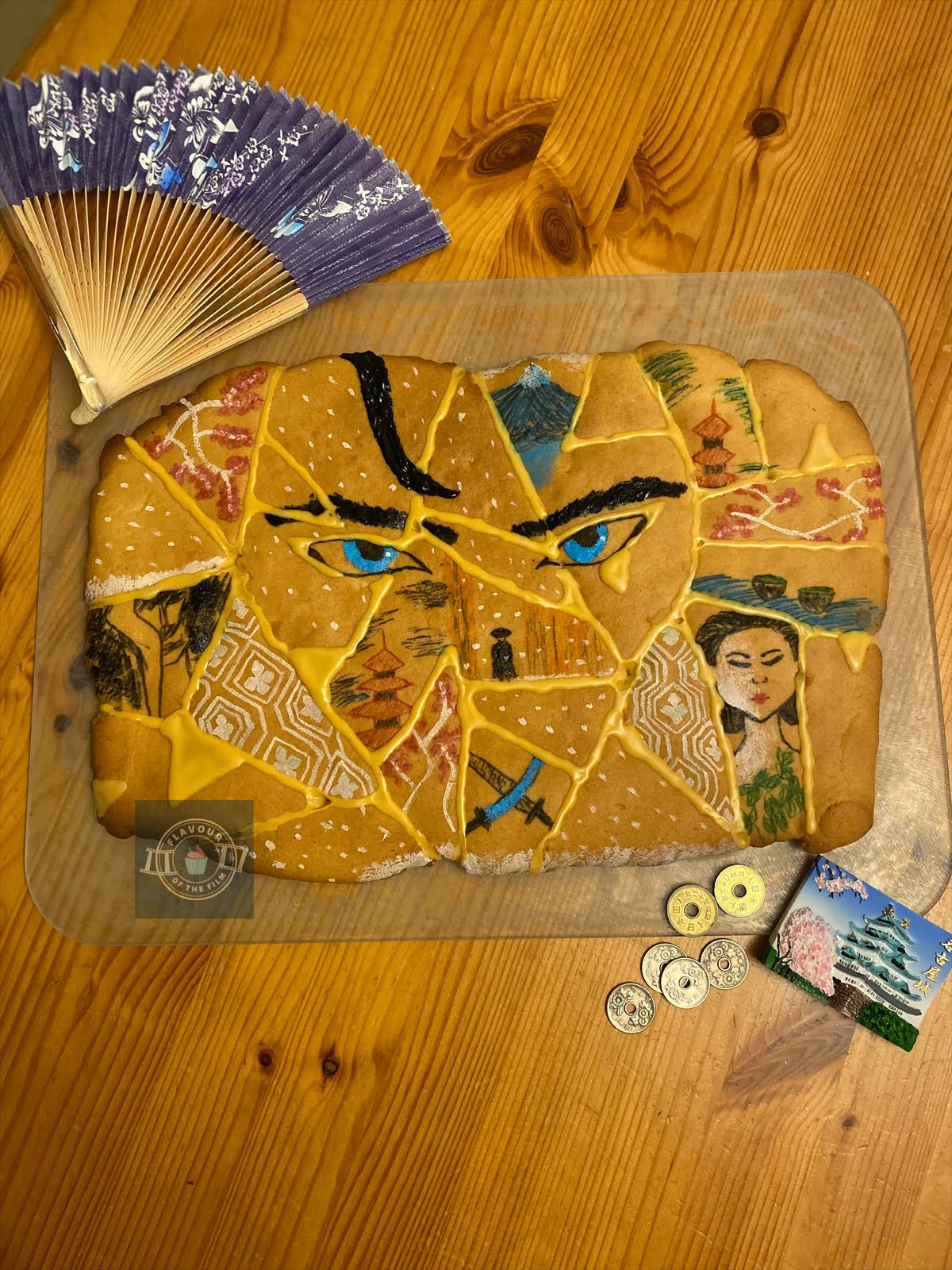
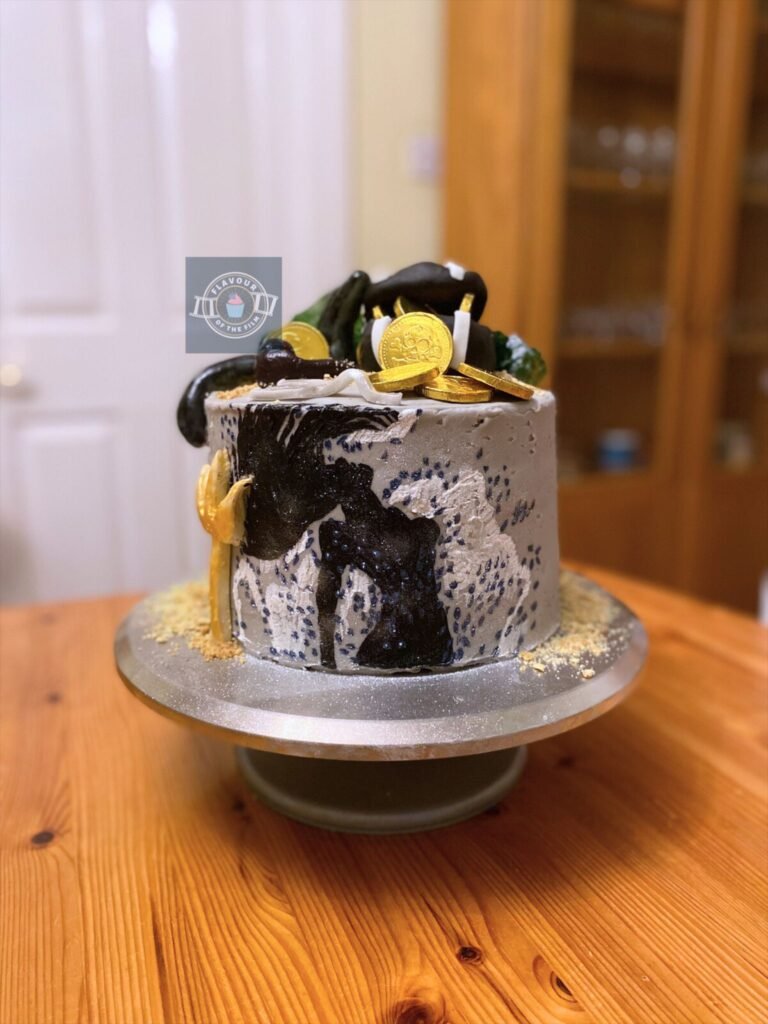
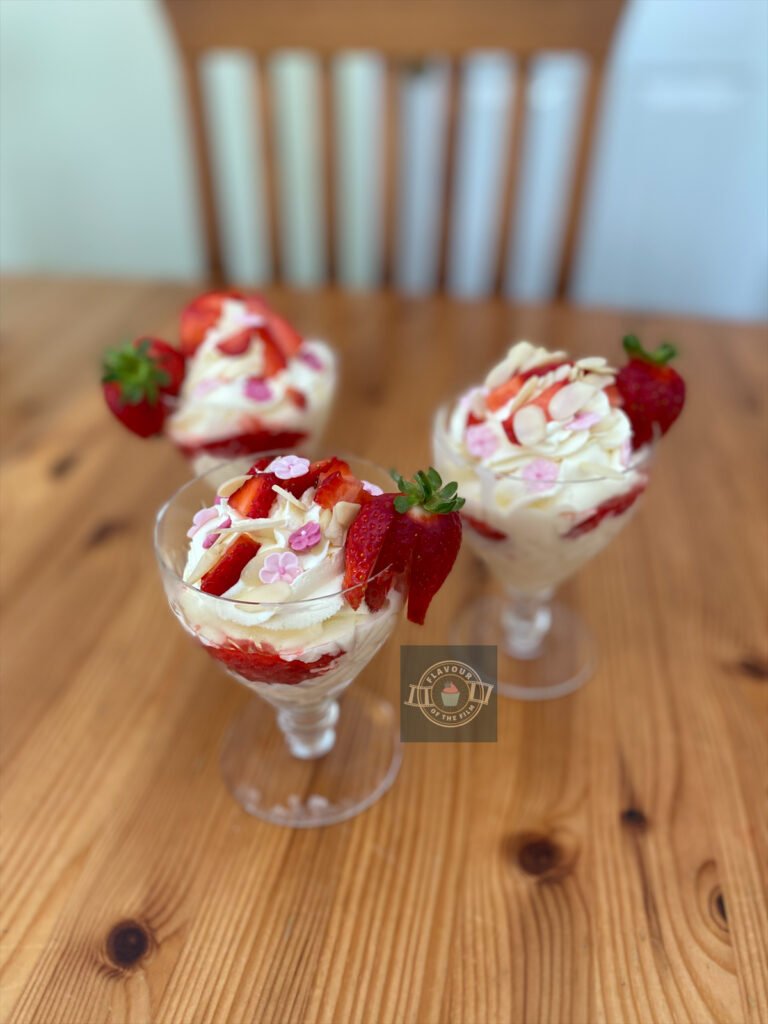

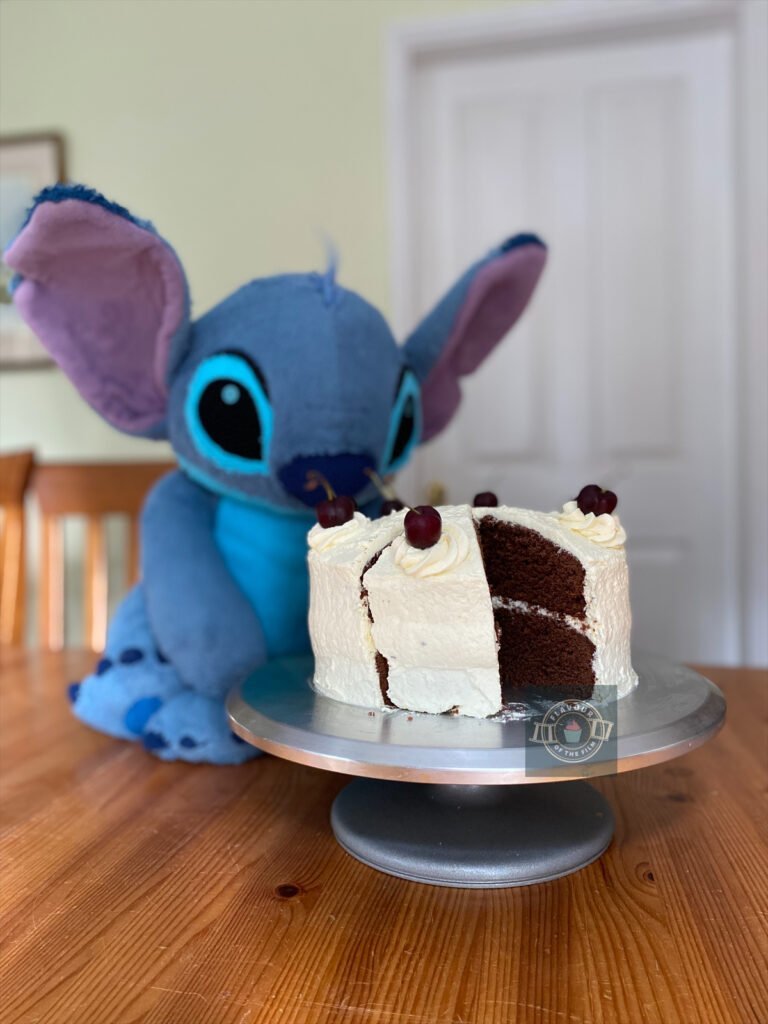
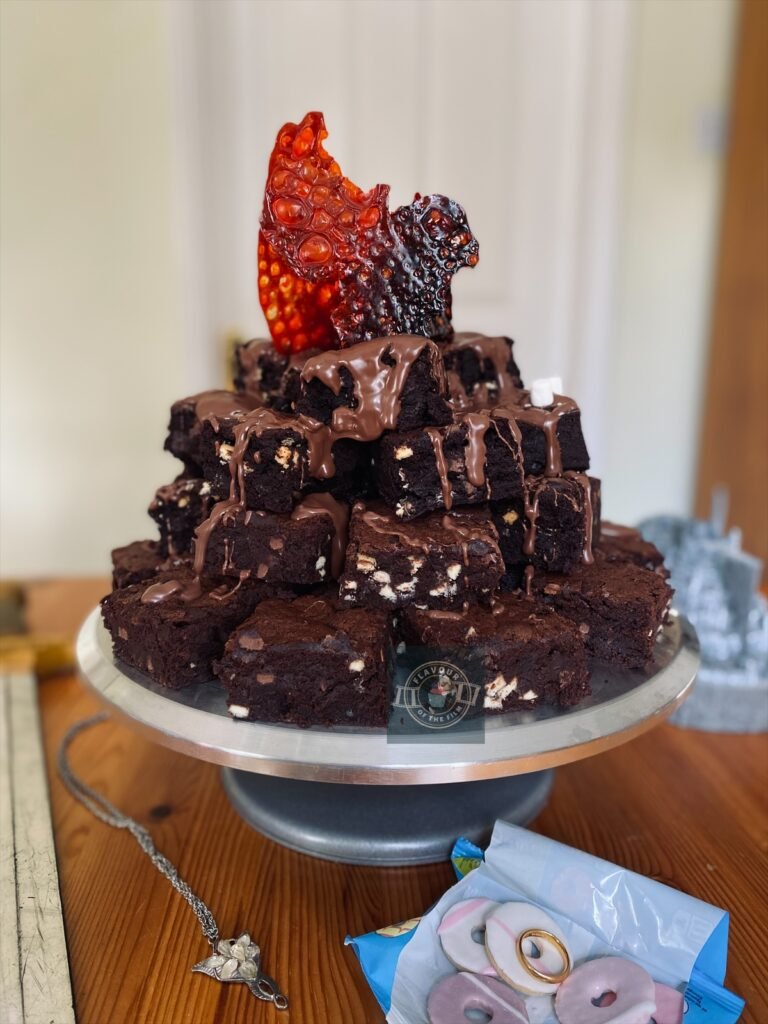
2 Comments
Comments are closed.